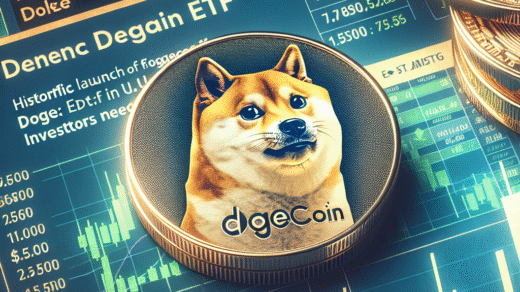“`html
Introduction
In the ever-evolving landscape of cryptocurrency trading, the emergence of decentralized exchanges (DEXs) has transformed how traders engage with digital assets. Recently, Aster DEX has drawn significant attention after its XRP trading volumes closely mirrored those of Binance, one of the largest centralized exchanges globally. This uncanny similarity has raised eyebrows among crypto analysts and investors, prompting questions about the authenticity of Aster’s trading activities.
DefiLlama’s Revelatory Data Analysis
Earlier today, DefiLlama, a leading crypto data aggregator, made headlines by pulling Aster’s perpetuals data from its tracking page. The reason? Aster’s XRP trading volumes exhibited a near-perfect synchronous pattern with those of Binance, raising concerns about potential market manipulation. DefiLlama’s founder, known as 0xngmi on X, highlighted this anomaly, suggesting that such close correlation may indicate wash trading or data manipulation, practices that undermine the integrity of decentralized trading platforms.
Understanding Wash Trading and Its Implications
Wash trading occurs when a trader buys and sells the same asset simultaneously to create misleading activity in the market. This practice can artificially inflate trading volumes, giving the impression of heightened demand. In Aster’s case, the nearly identical volumes to Binance sparked skepticism about the actual demand for the platform. As 0xngmi noted, “Until we can get that data to verify if there’s wash trading, Aster perp volumes will be delisted.”
Aster DEX: A Rising Contender in the Crypto Space
Despite the controversy, Aster has quickly established itself as a formidable player among perpetual DEXs. Unlike traditional exchanges, Aster allows traders to take long or short positions on crypto assets with leverage, all without the need for a centralized intermediary. This model appeals to many traders seeking to capitalize on market movements without relinquishing control of their assets.
Recently, Aster surged to the top of DefiLlama’s leaderboard for daily fees and volume among perpetual DEXs, even outpacing competitors like Hyperliquid at one point. This rapid rise is noteworthy, particularly as the ASTER token has seen tremendous growth, skyrocketing from $0.09 to over $2 in just under three weeks. Such impressive returns of over 1,500% have made it one of the hottest tokens in the market, drawing interest from both retail and institutional investors alike.
The Role of XRP and ETH in Aster’s Success
XRP and Ethereum (ETH) volumes have played a critical role in Aster’s remarkable metrics. As traders flock to platforms offering high leverage and quick execution, the demand for XRP trading on Aster has surged. However, the close correlation of Aster’s volumes with Binance has raised red flags among analysts, as it suggests that organic decentralized order flow, typically characterized by divergence, may not be present.
Comparative Analysis: Aster vs. Hyperliquid
When comparing Aster to other perpetual DEXs, such as Hyperliquid, the divergence in trading volume correlation with Binance is telling. Hyperliquid demonstrated a looser correlation of 0.59 with Binance volumes, allowing it to maintain its metrics despite receiving a “medium” risk score in wash trading assessments. In contrast, Aster’s one-to-one volume correlation with Binance, combined with its “low” wash trading risk score, prompted DefiLlama to take precautionary measures.
Binance’s Involvement and Market Reactions
Adding another layer to this unfolding narrative, Binance itself listed ASTER with a “Seed Tag” earlier this week. This timing is significant, considering that Binance co-founder Changpeng “CZ” Zhao has been an outspoken advocate for Aster on X in recent days. However, the announcement of this listing coincided with a general market retreat, leading to a 10% decline in ASTER’s price within a 24-hour period. Nevertheless, all losses were swiftly reversed following Binance’s announcement, indicating strong investor confidence.
What Lies Ahead for Aster DEX?
As Aster continues to navigate the complexities of the cryptocurrency market, the coming weeks will be critical in determining its standing among other DEXs. The scrutiny over its trading volumes and the potential for wash trading will likely remain in the spotlight. For traders and investors alike, understanding the dynamics of decentralized trading and the implications of trading volume discrepancies is crucial.
With the ongoing evolution in the crypto space, platforms like Aster will need to foster transparency and trust to attract a broader user base. The ability to verify organic trading volume will be paramount in cementing Aster’s reputation as a legitimate player in the decentralized exchange arena.
Conclusion
In summary, the recent developments surrounding Aster DEX’s XRP trading volumes raise important questions about market integrity and the future of decentralized exchanges. As the crypto landscape continues to evolve, both traders and investors must remain vigilant, ensuring they are engaging with platforms that uphold the highest standards of transparency and security.
For those looking to deepen their understanding of XRP and its market dynamics, check out our comprehensive guides on What is XRP and XRP Price Prediction.
“`
Meta Description: “Discover how Aster DEX’s XRP trading volumes closely mirror Binance, raising concerns about potential wash trading. Explore expert insights and market implications in the evolving crypto landscape.”







